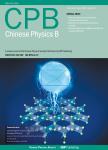Developments of parabolic equation method in the period of 2000–2016
Developments of parabolic equation method in the period of 2000–2016作者机构:Acoustic Science and Technology LaboratoryHarbin Engineering University College of Underwater Acoustic EngineeringHarbin Engineering University
出 版 物:《Chinese Physics B》 (中国物理B(英文版))
年 卷 期:2016年第25卷第12期
页 面:106-117页
核心收录:
学科分类:07[理学] 070104[理学-应用数学] 0805[工学-材料科学与工程(可授工学、理学学位)] 0704[理学-天文学] 0701[理学-数学]
基 金:Project supported by the Foundation of State Key Laboratory of Acoustics,Institute of Acoustics,Chinese Academy of Sciences(Grant No.SKLA201303) the National Natural Science Foundation of China(Grant Nos.11104044,11234002,and 11474073)
主 题:parabolic equation method underwater sound propagation seismo-acoustic transmission charac-teristics modelling three-dimensional problems
摘 要:Parabolic equation (PE) method is an efficient tool for modelling underwater sound propagation, particularly for problems involving range dependence. Since the PE method was first introduced into the field of underwater acoustics, it has been about 40 years, during which contributions to extending its capability has been continuously made. The most recent review paper surveyed the contributions made before 1999. In the period of 2000-2016, the development of PE method basically focuses on seismo-acoustic problems, three-dimensional problems, and realistic applications. In this paper, a review covering the contribution from 2000 to 2016 is given, and what should be done in future work is also discussed.



